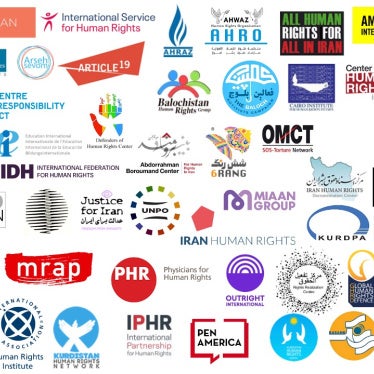The images of police and soldiers violently repressing demonstrators gathered in downtown Beirut on August 22 to protest the garbage crisis and political corruption sent shock waves through Lebanese society. Security forces beat unarmed protesters, turned water cannons on journalists, and fired rubber bullets towards fleeing crowds. The security forces even shot live bullets into the air, sending terrified families back home.
The next day, as a new round of protests was called, a small group of angry protesters attacked the security forces with stones – eventually leading the security forces to respond with more teargas canisters, rubber bullets and water cannons. Since then, there have been almost daily confrontations in downtown Beirut between protesters and security forces.
The Beirut protests, like many social movements, pose a challenge for security forces, who have a dual responsibility – to protect the basic right to protest while also maintaining order. Even in overwhelmingly peaceful protests like the one on August 22, one can often find some protesters who throw stones or try to provoke the police. So how should security forces respond?
The United Nations Basic Principles on the Use of Force and Firearms provide that law enforcement officials may only use force if other means remain ineffective or have no likelihood of achieving the intended result. When using force, law enforcement officials should exercise restraint and act proportionately, taking into account both the seriousness of the offense and the legitimate objective to be achieved. Lebanon’s own police force, the ISF, adopted a code of conduct in 2011 which stipulates that, “Police members will not resort to the use of force unless it is necessary, proportionate and after exhausting all possible non-violent means, within the minimum extent needed to accomplish the mission.”
While the principle is clear, the challenge is how to carry it out during the often tense situations that arise during protests. In this respect, Lebanon’s security forces should adopt certain good practices that are employed in other countries. First, security forces should make every effort to communicate clearly with protesters before resorting to shooting teargas canisters or bullets in the air. This was demonstrably lacking during the Beirut protests, when security forces issued no warnings before resorting to violent means.
There also needs to be more coordination between the multiple security agencies on the ground, including riot police, other ISF units, the army, and units responsible for the security of parliament and government. For anyone monitoring their behavior on August 22, it appeared that there was no clear coordination among them.
There is also an issue of equipment. On August 22, as protesters tried to make their way to Parliament, they came face to face with soldiers equipped only with loaded machine guns. The encounter, caught on camera, shows soldiers who appear taken by surprise and who quickly resort to firing into the air. The shots angered the crowd, who threw water bottles and sticks at the soldiers. Luckily no one was hit with a live bullet. But one mistake and the death toll could have been terrible.
To control protests, Lebanon often relies on soldiers who are untrained in performing policing roles such as crowd control, and are frequently deployed without protective gear and equipped only with a standard machine gun. This has led to deadly consequences. In 2004, the Lebanese army was sent to face protesters in the Beirut suburb of Hay al-Selloum, which ended tragically when army troops opened fire at the protesters, killing five. Similarly in 2007, Lebanese army soldiers opened fire on Palestinian protesters marching near the Baddawi camp, killing two. In both cases, these deaths may have been avoidable if more appropriate equipment and orders had been issued.
But the right equipment isn’t everything. Witness accounts and footage from the August 22 protests strongly suggest that security forces used rubber bullets and teargas excessively. Many wounded protesters reported being shot at with rubber bullets as they were helping other wounded protesters or as they were running away.
Which leads to the main measure that has been lacking: accountability. Law enforcement officials who use excessive force should face criminal liability as well as disciplinary action. Yet, impunity is the norm in Lebanon. There is no indication that guilty officers in past instances of excessive use of force were ever held to account. The public prosecutor, interior minister, and even the prime minister promised to investigate and hold any official accountable for the August 22 violence. But given the authorities’ track record, trust in such investigations is low.
To overcome this potential breakdown of trust, many countries rely on fact-finding commissions that can hold public hearings and report their findings publicly. In some countries, national human rights commissions play a key role in investigating and issuing findings and recommendations to address police violence. Unfortunately, Lebanon’s draft law for a National Human Rights commission – like many other reform projects – has been stuck in parliament’s drawers for years.
The recent protests have brought to the surface the high level of frustration that the Lebanese have toward a political system that has repeatedly failed to provide them with basic services. Expect more demonstrations. Lebanon’s security forces need to show they can respect the rights of protesters lest they find that they become targets of protests themselves.







